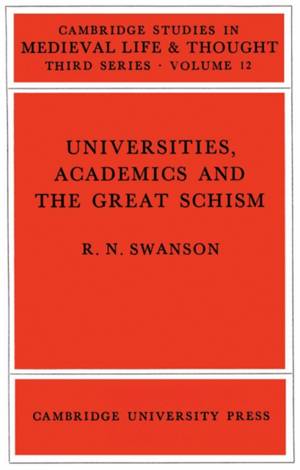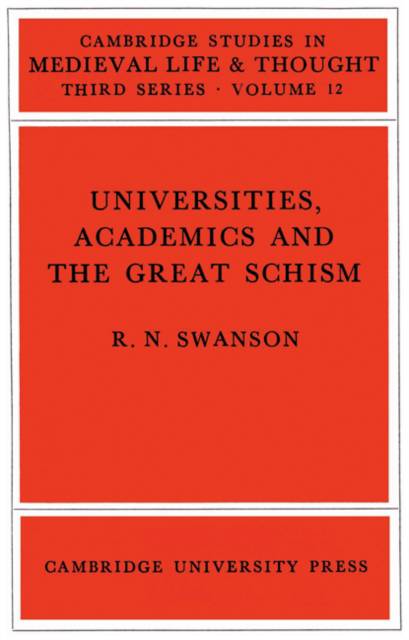
- Afhalen na 1 uur in een winkel met voorraad
- Gratis thuislevering in België vanaf € 30
- Ruim aanbod met 7 miljoen producten
- Afhalen na 1 uur in een winkel met voorraad
- Gratis thuislevering in België vanaf € 30
- Ruim aanbod met 7 miljoen producten
Zoeken
Omschrijving
The election of both Urban VI and Clement VII to the papacy in 1378, by the same body of cardinals, presented the church with an apparently insoluble constitutional difficulty. Dr Swanson examines the reaction to this situation from a hitherto unconsidered perspective: that of the universities to whom Europe turned to formulate the theories which would solve the problem. He examines the attempts by the academics to gain support for their various schemes and shows how these produced conflict at various levels: locally, between factions within individual universities; nationally, between rival universities, and between universities and their ecclesiastical and secular superiors; and internationally, as the universities adopted mutually exclusive attitudes and sometimnes clashed with their own popes. The concluding chapters show how the academics finally devised the conciliarist formula which led to the convocation of the Council of Pisa in 1409.
Specificaties
Betrokkenen
- Auteur(s):
- Uitgeverij:
Inhoud
- Aantal bladzijden:
- 264
- Taal:
- Engels
- Reeks:
- Reeksnummer:
- nr. 12
Eigenschappen
- Productcode (EAN):
- 9780521522267
- Verschijningsdatum:
- 8/08/2002
- Uitvoering:
- Paperback
- Formaat:
- Trade paperback (VS)
- Afmetingen:
- 145 mm x 217 mm
- Gewicht:
- 340 g

Alleen bij Standaard Boekhandel
+ 181 punten op je klantenkaart van Standaard Boekhandel
Beoordelingen
We publiceren alleen reviews die voldoen aan de voorwaarden voor reviews. Bekijk onze voorwaarden voor reviews.











